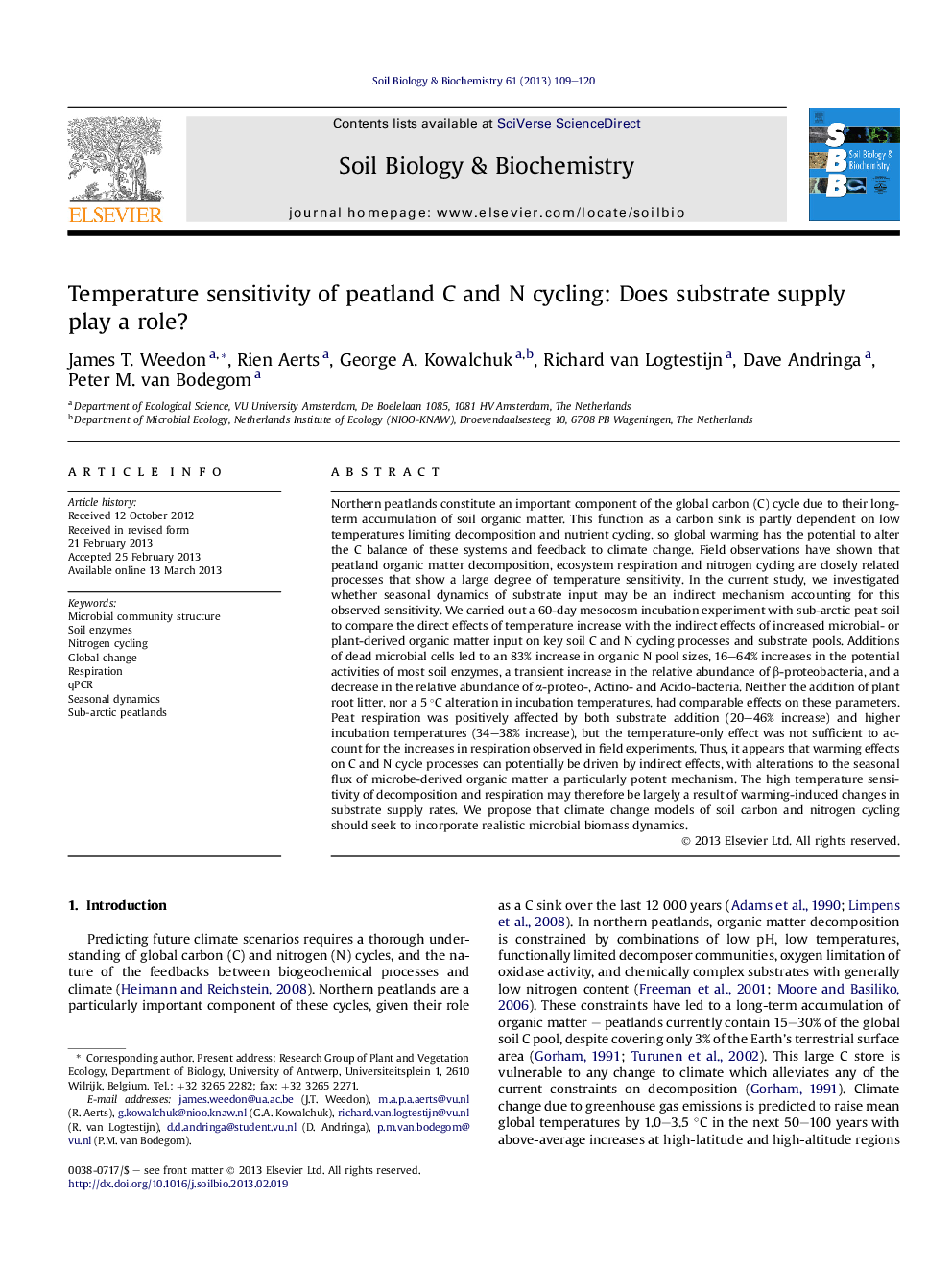| کد مقاله | کد نشریه | سال انتشار | مقاله انگلیسی | نسخه تمام متن |
|---|---|---|---|---|
| 2024796 | 1542623 | 2013 | 12 صفحه PDF | دانلود رایگان |

Northern peatlands constitute an important component of the global carbon (C) cycle due to their long-term accumulation of soil organic matter. This function as a carbon sink is partly dependent on low temperatures limiting decomposition and nutrient cycling, so global warming has the potential to alter the C balance of these systems and feedback to climate change. Field observations have shown that peatland organic matter decomposition, ecosystem respiration and nitrogen cycling are closely related processes that show a large degree of temperature sensitivity. In the current study, we investigated whether seasonal dynamics of substrate input may be an indirect mechanism accounting for this observed sensitivity. We carried out a 60-day mesocosm incubation experiment with sub-arctic peat soil to compare the direct effects of temperature increase with the indirect effects of increased microbial- or plant-derived organic matter input on key soil C and N cycling processes and substrate pools. Additions of dead microbial cells led to an 83% increase in organic N pool sizes, 16–64% increases in the potential activities of most soil enzymes, a transient increase in the relative abundance of β-proteobacteria, and a decrease in the relative abundance of α-proteo-, Actino- and Acido-bacteria. Neither the addition of plant root litter, nor a 5 °C alteration in incubation temperatures, had comparable effects on these parameters. Peat respiration was positively affected by both substrate addition (20–46% increase) and higher incubation temperatures (34–38% increase), but the temperature-only effect was not sufficient to account for the increases in respiration observed in field experiments. Thus, it appears that warming effects on C and N cycle processes can potentially be driven by indirect effects, with alterations to the seasonal flux of microbe-derived organic matter a particularly potent mechanism. The high temperature sensitivity of decomposition and respiration may therefore be largely a result of warming-induced changes in substrate supply rates. We propose that climate change models of soil carbon and nitrogen cycling should seek to incorporate realistic microbial biomass dynamics.
► Soil C and N cycling processes in northern peatlands are highly temperature sensitive.
► Apparent temperature sensitivity can arise through indirect warming effects.
► We tested the importance of temperature vs increased substrate on soil processes.
► Added dead bacterial cells had a much larger effect than root litter or 5 °C warming.
► Indirect (microbial) substrate effects may explain apparent temperature sensitivity.
Journal: Soil Biology and Biochemistry - Volume 61, June 2013, Pages 109–120